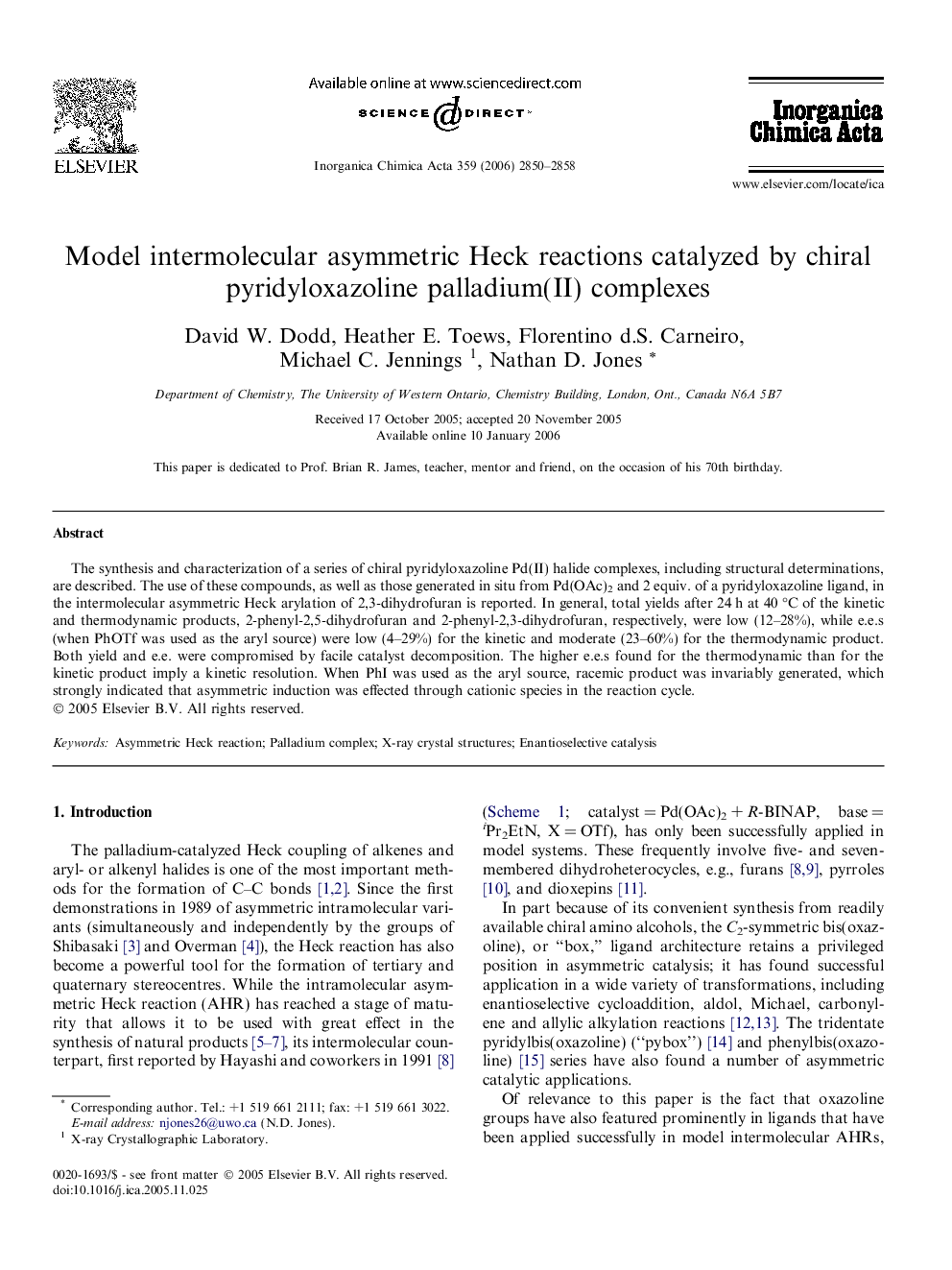| Article ID | Journal | Published Year | Pages | File Type |
|---|---|---|---|---|
| 1313025 | Inorganica Chimica Acta | 2006 | 9 Pages |
The synthesis and characterization of a series of chiral pyridyloxazoline Pd(II) halide complexes, including structural determinations, are described. The use of these compounds, as well as those generated in situ from Pd(OAc)2 and 2 equiv. of a pyridyloxazoline ligand, in the intermolecular asymmetric Heck arylation of 2,3-dihydrofuran is reported. In general, total yields after 24 h at 40 °C of the kinetic and thermodynamic products, 2-phenyl-2,5-dihydrofuran and 2-phenyl-2,3-dihydrofuran, respectively, were low (12–28%), while e.e.s (when PhOTf was used as the aryl source) were low (4–29%) for the kinetic and moderate (23–60%) for the thermodynamic product. Both yield and e.e. were compromised by facile catalyst decomposition. The higher e.e.s found for the thermodynamic than for the kinetic product imply a kinetic resolution. When PhI was used as the aryl source, racemic product was invariably generated, which strongly indicated that asymmetric induction was effected through cationic species in the reaction cycle.
Graphical abstractThe synthesis and characterization of a series of chiral Pd(II)-pyridyloxazoline complexes, including structural determinations, are described. The use of these compounds in the intermolecular asymmetric Heck arylation of 2,3-dihydrofuran is also reported.Figure optionsDownload full-size imageDownload as PowerPoint slide
